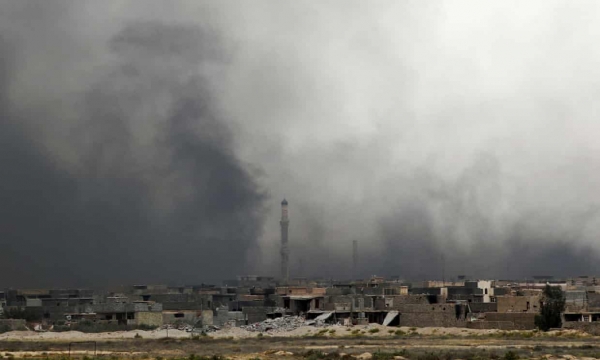The Harvard Law School International Human Rights Clinic and the Conflict and Environment Observatory -which monitors and publicizes data on pollution and other environmental damage caused by armed conflict- are the co-authors of a new report on the environmental effects of armed conflicts.
The research aims at highlighting the importance of enhancing the “protection of the environment in relation to armed conflict” (PERAC) to minimize additional harm to both humans and ecosystems as a whole. Despite the efforts of States and the United Nations Environmental Assembly (UNEA), the measures to prevent and remediate human suffering and to prevent environmental harm are still insufficient as over the last decade wars have increasingly affected ecosystems. The report provides a new framework to ensure effective assistance to civilians and combatants harmed by toxic remnants of war or prohibited weapons. The 14 principles identified include: definitions of victims and toxic remnants of war; types of harm and assistance to be afforded; the legal framework and the responsibilities; and guidelines for its implementation.
The first principle “purpose of victim assistance” refers to the concept of “victim assistance” during and beyond armed conflict. According to this principle , assistance for victims is to address immediate and ongoing needs of individuals affected by toxic remnants of war (TRW). TRW are toxic substances directly or indirectly caused by armed conflicts. It also includes radioactive substances remaining from “other conflict-related sources”, such as attacks on oil wells or missile strikes on a chemical factory. Based on principle 2, TRW further includes contaminants caused directly by military activities, such as the testing of weapons during occupation.
Principle 3 and 4 define victims harmed by TRW and the respective harms that can result from the exposure to TRW. Principle 3, victim status, includes the affected families and communities. This is illustrated by the herbicide and defoliant “Agent Orange”, which was widely used during the Vietnam war and which contributed to a variety of diseases and caused intergenerational harms such as birth defects. Indeed, some TRW can impact on the victim's health long after an individual’s initial exposure: if TRW pollute a local water supply, the continuous exposure to the harmful substance can even affect crossing generations. While contacts with explosive remnants of war usually cause an immediate injury, TRW radioactive elements can cause a person cancer years after the original contact occurred. For this reason,TRW victims are often unable to identify TRW as the direct cause of harm, “particularly in the complex polluted environments of contemporary armed conflicts”. Hence there is a limited understanding of the impacts of TRW which has an effect on victim assistance and further worsens health conditions of individuals.
Health effects are not the only types of harms that an individual can suffer due to TRW as victims may experience socioeconomic consequences and obstacles to participate in society. Hence, victim assistance has to address the complete range of harms resulting from TRW, such as psychological trauma. Victim assistance has to include rehabilitation, the provision for victims’ social inclusion, remediation of contaminated environments and access to correct information in regard to the risks associated with TRW (principle 5). Humanitarian disarmament law, such as the Mine Ban Treaty and the Convention on Cluster Munitions, requires governments to inform victims or potential victims through awareness programs about the risks of living in or around contaminated areas. In so doing, the “affected State'' -the State that has control over areas where TRW victims are located- has to ensure that the principles are adhered to being in “the best position to assist because of its proximity to victims” (principle 6).
To ensure that victims’ needs are met, it is fundamental to develop assistance strategies based on the principles of accessibility (principle 11), inclusivity (Principle 12), non-discrimination (principle 13) and transparency (principle 14). While countries are flexible in designing their programs, the report lists five elements to better address victims' short and long-term needs: a dedicated budget, a strict timeline for the implementation of the programs, a focal point -often a specific ministry-, a binding framework through laws and policies and a delegation of responsibilities. Principle 11 also suggests adapting victim assistance strategies to cultural, geographical and religious contexts in order to increase the accessibility and sustainability of assistance.
To learn more, please read:
http://hrp.law.harvard.edu/wp-content/uploads/2020/09/Confronting-Conflict-Pollution.pdf
https://undocs.org/UNEP/EA.3/Res.1
https://undocs.org/UNEP/EA.2/Res.15
Author: Silvia Luminati







